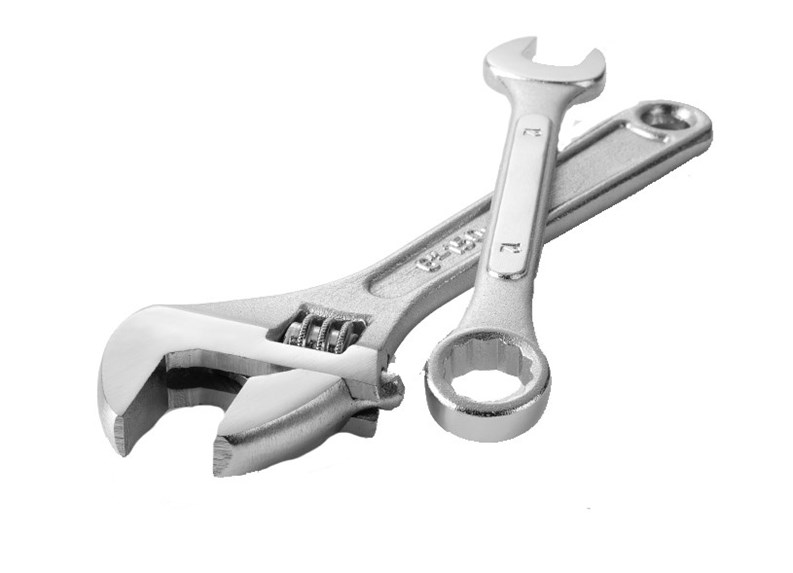In a city that is made for walking, few stop to pause and look beneath their feet at the sidewalks that lead them uptown, downtown and crosstown. But these sidewalks—all 12,000 miles of them—form the arteries at the heart of New York. They are vitally important to the city, and over the years have earned legendary-status for themselves. Movies are named after these miles of concrete. Even former New York Governor Al Smith used them to his advantage in the 1920s—the tune “Sidewalks of New York” was the so-called Happy Warrior’s campaign theme song.
Holding such an important place in the history and daily lives of New Yorkers, it is no wonder so much attention is paid to their upkeep. Keeping these concrete paths sound and safe is of paramount importance—cracks, chips, and buckles can cause havoc for pedestrians hurrying from jobs to homes, and for tourists out sightseeing. Today, when it comes to preventing slips and falls and ensuring that the city’s sidewalks are optimal shape, New York’s co-op and condo buildings have taken on a large share of that responsibility, thanks to city-wide legislation passed three years ago.
Changes in the Law
“In 2003, there was a pretty significant change in the law,” says attorney Robert Braverman of Braverman & Associates, PC in Manhattan. “The city shifted almost complete responsibility for sidewalk-related accidents to the abutting land owner. In the past, the general rule was that the municipality would be responsible for the sidewalks.”
That changed with the adoption of Local Law 49, which states, “It shall be the duty of the owner of real property abutting any sidewalk…to maintain such sidewalk in a reasonably safe condition. The property owner shall be liable for any injury to property or personal injury, including death, proximately caused by the failure of such owner to maintain [the] sidewalk in a reasonably safe condition. Failure to maintain [the] sidewalk in a reasonably safe condition shall include but not be limited to; the negligent failure to install, construct, reconstruct, repave, repair, or replace defective sidewalk flags and the negligent failure to remove snow, ice, dirt, or other material from the sidewalk.”
In an e-mail interview, Chris Gilbride, a spokesperson for the New York City Department of Transportation (DOT) said, “New York City law requires property owners to install, repave, reconstruct and maintain in good repair the sidewalk adjacent to their properties at their own cost.”
The law goes on to specify that the sidewalk includes the intersection quadrant and pedestrian ramps for corner properties. Also in 2003, Local Law 54 made property owners potentially liable for personal injuries caused by their failure to maintain reasonably safe sidewalks, and mandated that they carry insurance to cover such occurrences.
According to Local Law 54, “An owner of real property…shall be required to have…personal injury and property damage liability insurance for any injury to property or person—including death—proximately caused by the owner’s failure to maintain the sidewalk in a reasonably safe condition. The city shall not be liable for any injury to property or personal injury, including death, as a result of the failure of an owner to comply with this section.”
“Property owners are encouraged to perform repairs to their sidewalks before a condition becomes a defect that could give rise to a violation,” Gilbride adds.
Under special circumstances, however, the city maintains responsibility for the sidewalk. For example, if the roots of a city-owned tree start to buckle a sidewalk, the DOT will make the repairs. The city also would be responsible, in that instance, for any liability associated with the defect, says Braverman.
Because this law only applies to residences with four or more families, it is of special significance to co-op and condo buildings. “Managing agents need to be on top of things if they notice problems,” Braverman says. “Before they simply had to inform the city about the problem. Now, they have to make sure they get estimates, hire a contractor and get the entire job done.”
If the sidewalks surrounding the property are not maintained—including proper installation, repaving, reconstruction or repair—the DOT will inspect the site and issue a notice of violation. If that notice goes unheeded, the city will make the repairs—and bill the property owner.
According to Gilbride, however, this has not been a major issue for most co-op and condo buildings. “The DOT’s sidewalk repair program focuses most of its work on city-owned property and in neighborhoods with predominately one-, two- and three-family homes,” he writes. Since the law went into effect three years ago, Gilbride says that co-op and condo owners have been exceptionally responsive to this relatively new responsibility.
Step on a Crack…
Understanding what constitutes a sidewalk in disrepair is half the battle when it comes to good upkeep and maintenance. According to Gilbride, defects which could result in a violation include broken or chipped surfaces greater than an inch wide or deeper than half an inch. Vertical surface differences between one sidewalk segment and another can also cause problems. A missing sidewalk segment—or one that was never installed—also will raise flags. Loose and cracked segments that have become unstable can cause issues, as will improper slopes that lead to poor drainage. Any and all of these problems can pose safety risks to pedestrians and will likely gain the attention of the city at some point.
When there are safety issues, there is always a need for insurance, especially considering that each year more than 3,000 New Yorkers report injuries due to defective sidewalks or pavements. A significant portion of those likely will sue. Before the new laws of 2003, co-ops and condos had little reason to worry when it came to those trips, slips and falls outside their front doorsteps. Today, all that has changed. “Buildings are now required to maintain liability insurance to cover slips and falls,” Braverman says. A simple liability policy should suffice, with no additional, special coverage needed.
Braverman also encourages boards and managers to be aware of entrances and exits, the areas that lead toward and away from public sidewalks. Buildings with commercial-use lobbies, such as retail shops or corporate offices, may face handicap accessibility issues and have to submit to Americans with Disabilities Act provisions for providing proper ingress and egress. Just as the city has made sidewalks more handicapped-accessible for those in wheelchairs or on foot, who may need lower curbs or smooth ramps up from curbs, so too should buildings look to make those transitions from pathways to doorways easier.
Stop Trouble Before it Starts
Perhaps the best way to avoid sidewalk problems is to make sure that a trusted professional handles both installations and repairs. Ted Wilson of Advanced Pavement Technologies in Fairfield, New Jersey, has seen a lot of co-op and condo buildings deal with sidewalk issues. Any number of problems can arise which will lead to cracked, chipped and ultimately dangerous pathways. “I see it all the time,” Wilson says. “Water can build up between the concrete and Belgian block [underneath]. When it gets cold, that water turns to ice, causing the pavement to expand, heave and become a liability.”
Problems arise, too, when well-intentioned maintenance crews inundate the walkways with salt, trying to prevent ice hazards in the winter. By using salt instead of alternative de-icers, the crews are shortening the life span of the concrete, creating more opportunities for cracks and chips come spring. “Contractors should be using calcium chlorides instead of salt,” Wilson says.
Tree roots and the natural wear-and-tear of the annual freeze-and-thaw cycles also can cause problems. Substandard original construction, too, will lead to problems later in the life span of the sidewalk. “A poor subgrade when the sidewalk was first built can cause trouble,” Wilson says. So can a lack of good compaction when the concrete is poured, or improperly set-up expansion joints.
A good, long-lasting sidewalk starts with a solid sub-base built correctly from the ground up. With solid compaction, proper use of wire mesh and well-set expansion joints, a sidewalk can last decades. If those steps are not followed however, things will go awry, necessitating expensive repairs and needless inconveniences for residents and pedestrians.
As mentioned above, the best way to defend against these problems is to stop them before they start. Building managers need to ensure that crews are using calcium chloride rather than salt, and have to keep an eagle-eye on the walkways for which they are responsible. “This is especially important in the spring months when you start seeing cracks,” says Braverman. “The super should maintain a regular maintenance and inspection schedule.”
With a steady, thorough maintenance schedule and the phone number of a good contractor in your manager’s PDA, keeping the sidewalks of New York—or at least the ones that run along the perimeters of your building—in pristine condition should not cause too much stress or strain. And even though the occasional slip-and-fall may be inevitable, having the right insurance and the peace of mind that goes with it will go a long way toward alleviating any worries. In the end, it really is a sort of privilege to care for these miles of concrete, tied as they are to this city’s past and present and future.
Liz Lent is a freelance writer and a frequent contributor to The Cooperator.







Leave a Comment